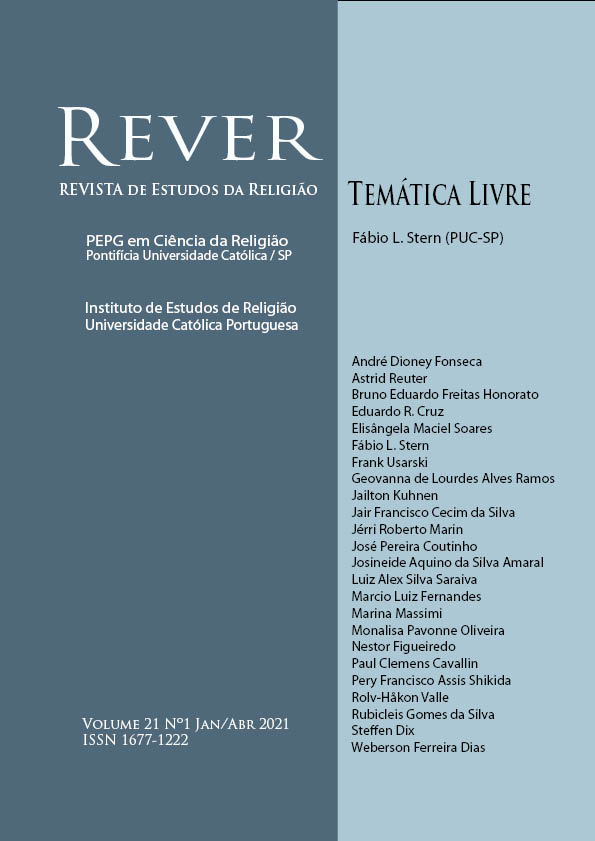An introduction to the religious diversity among the Japanese-Brazilians in Tomé-Açu, Pará
DOI:
https://doi.org/10.23925/1677-1222.2021vol21i1a6Palavras-chave:
Japanese immigrants, Tomé-Açu, Religion, DiversityResumo
In this article I aim to give an insight into the religious diversity among the Japanese-Brazilians living in the municipality of Tome-Acu, Para. In order to achieve this objective, fieldwork was carried out in Tome-Acu between September and October 2017. I interviewed fourteen people and visited religious organizations, cultural associations and museums. To establish the historical contexto I have, mostly, relied on the works of the scholars Alfredo K.O. Homma (2016), Philip Staniford (1973a, 1973b), Takashi Maeyama (1972, 1973), and Tomoo Handa (1987). I have compared my findings with studies carried out by scholars on other Japanese communities in Brazil. During and after my fieldwork, I have been in contact with Japanese-Brazilians who have identified themselves as Buddhist, Catholic, Christian, non-practicing Catholic, non-religious and Protestant. The article concludes that even though the Japanese-Brazilians attend a great variety of religious institutions, they only represent a minor part of the overall Japanese-Brazilian community in Tome-Acu.
Downloads
Publicado
Como Citar
Edição
Seção
Licença
Autores que publicam nesta revista concordam com os seguintes termos:
- Autores mantém os direitos autorais e concedem à revista o direito de primeira publicação, com o trabalho simultaneamente licenciado sob a Licença Attribution-NonCommercial 4.0 International, que permite o compartilhamento do trabalho com reconhecimento da autoria e publicação inicial nesta revista.
- Autores têm autorização para assumir contratos adicionais separadamente, para distribuição não exclusiva da versão do trabalho publicada nesta revista (ex.: publicar em repositório institucional ou como capítulo de livro), com reconhecimento de autoria e publicação inicial nesta revista.


